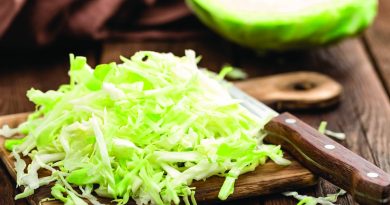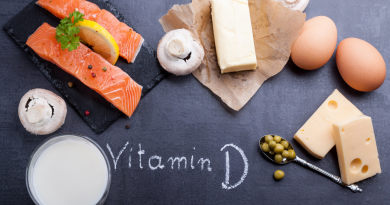Soaking Nuts And Seeds Vital For Health
By Cynthia Roveda, RHN
When you eat edible seeds that have not be properly prepared, they are robbing you of vital minerals, vitamins and enzymes needed to sustain a healthy body.
Edible seeds: nature’s powerhouse
Edible seeds such as raw nuts, whole grains, beans and legumes provide excellent nutrition. Although rich in nutrients, edible seeds also contain anti-nutrients that can block assimilation, interfere with digestion and irritate the intestinal tract.
They also contain toxic substances which is nature’s defence mechanism so that they may survive until proper growing conditions are present. These natural defence mechanism include nutritional inhibitors and toxic substances, such as tannic acid and goitrogens, as well as phytic acid.
This natural protective phenomenon is a wonderful thing for the survival of these foods, however, if not neutralized before consumption by humans, it can really wreak havoc in our digestive systems if consumed in vast amounts. To capitalize on the nutritional profile of these foods and protect ourselves from natural toxins that protect them but harm us, seeds need to be soaked and dehydrated or sprouted.
In nature when it rains seeds get wet and can then germinate to produce a plant. So we are mimicking nature when we soak them. Phytic acid interferes with the body’s capacity to assimilate minerals and enzymes. It is found in many plants, especially in the bran or hull of grains and in nuts. Roots, tubers and other vegetables may also contain phytic acid, but in much smaller amounts.
The most concentrated sources are found in whole grains and beans. Some animals (like rats and birds) can digest foods containing phytic acid, but humans lack the enzyme (phytase) to make it happen. Actually high-phytate diets have caused growth problems in children. Phytic acid is the storage form of phosphorous. Seeds such as raw nuts, beans/legumes, whole grains and edible seeds store phosphorous as phytic acid. Phytates = phytic acid bound to a mineral Phytates are the energy source for the sprouting plants.
When a seed sprouts, phytase enzymes break down the stored phytates. Thirty-seven to 67 per cent of phytate is broken down in the stomach and small intestines. Vitamin D in the body seems to influence the amount of phytate retained in the body. The more vitamin D, the more phytate is retained. Every edible seed has different levels of phytic acid. Phytic acid blocks the uptake of essential minerals.
When food that contains phytic acid is eaten, the acid binds itself to minerals like iron, magnesium, zinc, calcium, manganese and chromium in the stomach, which prevents the digestive system’s ability to break down these foods properly (that’s why, often, when you eat nuts or edible seeds you see undigested bits in your stool the very next day!). Due to the phytic acid, nuts in particular have a high inhibitor action of the absorption of iron. It has been shown that the phytic acid present in bran can tie up zinc and interfere with its absorption, carrying it out through the intestinal track.
With zinc, the enzyme in the stomach, which normally destroys phytic acid, appears to be an enzyme containing zinc. This causes a vicious circle – the enzyme cannot work, therefore the phytic acid is not broken down, therefore it ties up more zinc, and as a consequence, less enzyme is present. Zinc has an important relationship with cadnium, a potentially toxic heavy metal. The presence of cadnium, greatly increases the need for zinc.
Cadnium is found in the centre of the grain, zinc is found mainly in the grain covering. So eating well-prepared whole grains, which has a higher amount of zinc than cadnium, reduces any possible absorption of cadnium. Studies suggest that we absorb approximately 20 per cent more zinc and 60 per cent more magnesium from our food when phytic acid is absent. Phytic acid does not leach minerals that are already stored in the body, it rather inhibits the absorption of minerals from food in which phytic acid is present.
When the diet lacks minerals or contains high levels of foods with phytic acid or both, there is a deminineralizing effect upon the body affecting bone growth and vitamin D metabolism. Scientists in general agree that diets high in phytic acid contribute to widespread mineral deficiency. Soaking edible seeds reduces phytic acid, permitting the body to absorb these important minerals.
The modern misguided practice of consuming large amounts of unprocessed bran often improves colon transit time at first, but may lead to irritable bowel syndrome and, in the long term, many other adverse effects. Phytic acid also interferes with enzymes we need to digest our food. Digestive enzymes help break down food. Phytic acid interferes or inhibits with three key digestive enzymes:
- Pepsin, which is needed for the breakdown of proteins in the stomach;
- Amylase, which is required for the breakdown of starch;
- Trypsin, which is needed for protein digestion in the small intestine.
A lack of digestive enzymes can lead to many illnesses that result in an unhealthy, enzyme-depleted gut. A lack of just one enzyme in the body can lead to many problems. Signs that the body is lacking enzymes are bloating, constipation, diarrhea, heartburn, irritable bowels and gas. Did you know that a body will only live as long as it body has enzymes? This is why it is important to neutralize the enzyme inhibitors to keep them from decreasing the body of its natural enzymes.
Nuts with skins such as almonds, pecans, and walnuts, contain the highest level of enzyme inhibiters. Soaking these increases the natural enzymes within the seeds and helps provide greater absorption of the its nutrients and increases digestibility. On the good side, when phytic acid binds with minerals in the stomach, it prevents the formation of free radicals, thus making it an antioxidant. It also binds with heavy metals, such as cadmium and lead, helping to prevent their accumulation in the body.
Furthermore, it has a cleansing action on the body since it binds with excesses of calcium, iron and other minerals (called chelation) especially for people who eat poor quality dairy products and refined foods. People who are trying to overcome a degenerative disease most likely have an excess of calcium deposits, since calcium deposits support a number of degenerative disease. For these people, it is then beneficial to eat phytic-acid-rich foods unsoaked.
It is important to note that alfalfa sprouts and edible seeds should be avoided in people with rheumatoid arthritis and systemic lupus erythematosus since they are rich in canavanine, an amino acid, which can ignite inflammation in these two conditions. Edible seeds also contain goitrogens which is known to suppress the function of the thyroid gland by interfering with iodine uptake, which can cause a goiter (enlargement of the thyroid), slow down the thyroid, hypothyroidism and other autoimmune thread disorders.
Besides reducing goitrogens, soaking will actually increase the necessary minerals needed for a healthy thyroid. Another tip to remove phytic acid from foods is consuming vitamin C food sources (leafy greens, lemons, oranges, grapefruit, avocados, broccoli, etc.) with meals that contain phytic acid, vitamin C appears strong enough to overcome phytic acid.
How much phytic acid is considered healthy?
Although cow and sheep can digest phytic acid, humans can tolerate a small to moderate amount of 100 mg to 400 mg per day. Eating a lot of edible seeds might mean that a person is exceeding the safe amount of phytic acid. Brazil nuts, raw unfermented cocoa beans, brown rice are extremely high in phytates. Soaking brown rice in water before cooking and a little fresh lemon juice or apple cider vinegar will eliminate some of the phytic acid.
If you soak brown rice in a tightly closed mason jar, the rice will generate heat. Drain, rinse and cook in broth and butter. Nuts should be soaked then dehydrated in a warm oven at a very low temperature. One hundred years ago people were soaking, roasting, fermenting and sprouting the foods they knew would give them a stomach ache if they didn’t. They used to prepare nuts and edible seeds by soaking them in salt water, dehydrating them in the sun, then grinding and cooking them.
Soaking edible seeds increases the nutritional content of vitamins such as vitamin A, C and, in particular B vitamins. Soaking in warm salted water activates the beneficial enzymes that then neutralizes the enzyme inhibitors making them more digestible and easily utilized. Soaking grains in an acidic warm water solution (I use lemon juice or apple cider vinegar diluted in water) also encourages the production of these friendly enzymes, and beneficial bacteria, which, in turn, neutralizes the phytic acid in the grains that put such a strain on the digestive system.
During the process of soaking, gluten and other difficult-to-digest proteins are partially broken down into simpler components that are more readily available for absorption. A tip that might encourage you to take the extra time to soak grains is, soaking whole grains really softens them up and makes them a lot more light and fluffy. People who do not like the gritty taste and texture of brown rice will notice the difference soaking makes to this grain. Once soaked for 24 to 48 hours, brown rice more closely resembles white fluffy rice.
Preparing nuts and edible seeds
- Add edible seeds/nuts to a glass jar or bowl and mix warm spring, filtered or pure water, sea salt and a little fresh lemon juice. Make sure there is enough water to cover the nuts completely. Aim for a 2:1 ratio, two parts water to one part edible seeds.
- Keep the bowl at room temperature and cover with a flour sac cloth or thin tea towel that breathes. Soak the food for the recommended amount of time in the chart below to make them as digestible as possible.
- Throw out any seeds that float to the top as they are generally rancid. It is better to be safe than sorry.
- When done soaking, drain out the soak water and thoroughly rinse. The soaking water will contain all of the toxic enzyme inhibitors which we are trying to remove. So proper rinsing is really important. Drain and rinse thoroughly until the water comes out clear in the final rinse. Some people recommend doing a final rinse with a diluted solution of apple cider vinegar in order to remove any remaining bacteria.
- You can either refrigerate the soaked edible seeds and consume within 24 hours or dry them in a warm oven set at the lowest temperature. Store in an airtight container. Make sure they are completely dry before you store them to prevent undesirable mold. Make sure they are crunchy before storing away.
- NEVER use the soak water in a recipe or give to animals. Discard the soak water.
After soaking, edible seeds can be sprouted. Sprouting is the germination of edible seeds to be eaten raw or cooked. It is the process of greatest vitality in the life cycle of a plant and, this vitality in ingested in the body when a person eats sprouts consistently.
Sprouts are rich in digestible energy, bioavailable vitamins, minerals, amino acids, proteins and phytochemicals and have a cooling and cleansing effect on the body.
Storing nuts and seeds
Another little tip pertaining to nuts and seeds, keep them in an airtight moisture free container, such as a glass jar, in the refrigerator for up to six months or in the freezer for one year. This is because nuts can become rancid quickly at room temperature since they do contain a high percentage of oil. To freshen nuts and seeds put them on a baking sheet and toast them in the oven at 350 degrees F for 10 to 15 minutes.
Next time you reach for raw nuts, whole grains, bean/legumes or edible seeds, for your health benefit, make sure they have been well stored and soaked. If you like, you can then go the extra mile and sprout the seeds and roast the nuts.
Cynthia Roveda is a Sturgeon Falls-based Registered Holistic Nutritionist. She can be reached at vitalnutritionvitale@gmail.com




